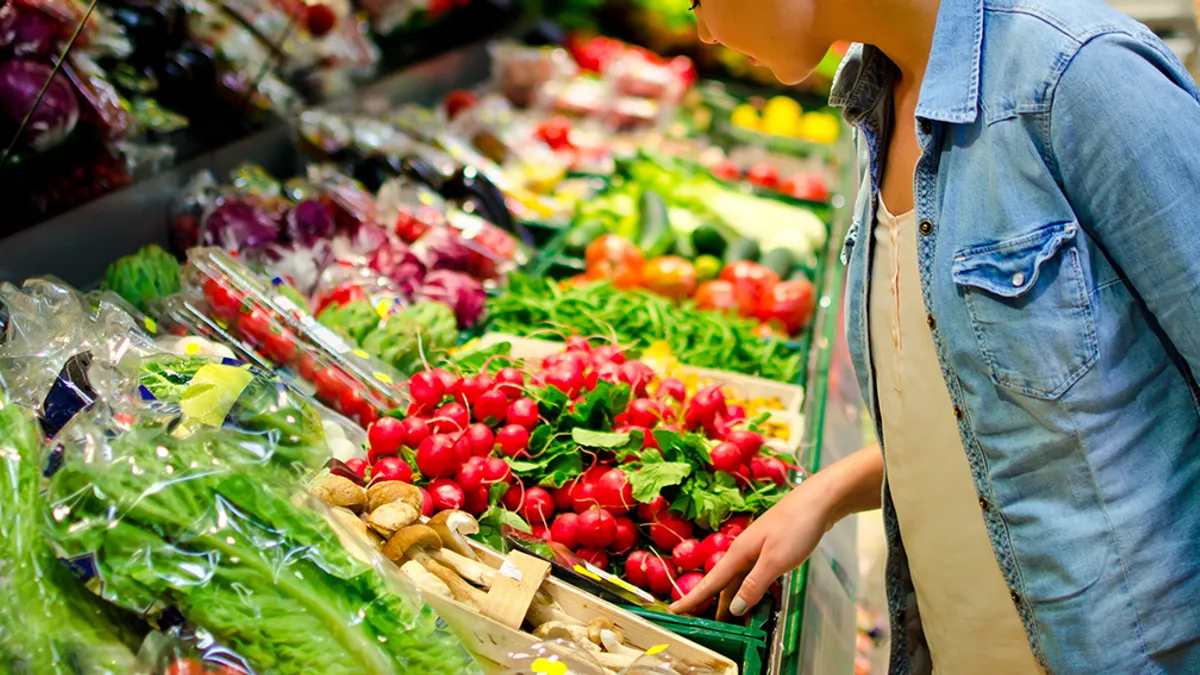Consumer behaviors have shifted significantly over the past few years. They want it all when it comes to their shopping experience. Grocery shopping, especially, took a huge leap during the pandemic. While the channel for purchasing groceries has historically been in-store, more consumers have turned to alternate online shopping options with curbside pickup or delivery. In fact, according to the PowerReviews’ Grocery Shopper report, 61% of consumers shop for groceries online more now than they did prior to the pandemic.
This pandemic-fueled rise of omnichannel, and the burgeoning surge in ecommerce, is here to stay. It is critical for businesses to attract consumers with the best-in-class omnichannel shopping experience to earn their loyalty and ensure repeat visits. Here are three elements that can help you master your omnichannel grocery experience:
More is more when it comes to online, so go the extra mile:
Online grocery is all about repeat clientele. The better you know them, the better you can serve them. There’s a huge divide between the number of products you may offer and the number of different products any given customer buys per year. "In our experience, each customer buys roughly 300-500 unique items per year, generally buying the same items every week with an average shopping cart size of about 50 items.” said Jean-Walter Guillery, Director of Product, at Orckestra.
This is where personalized shopping experience comes into play. A research by Epsilon and GBH Insights found that the vast majority of respondents (80 percent) want personalization from retailers. Personalization in retail has gained massive traction over the past five years, evolving to more segmented, customized and real-time offers and recommendations. A personalized shopping experience goes a long way in showing consumers that the grocer knows and cares for their needs.
Offering features like Orckestra’s “shop from my usuals” is advantageous. This can not only help assemble an order easily, but also enable consumers to checkout faster. When you can predict what a customer likely wants, assembling a shopping cart for the week can be done in as little as 10 minutes.
For customers using loyalty programs, in-store purchases can inform the online experience. This means "your usuals" may contain products you've only ever bought in-store. It can also mean that search results will use both in-store and online history to show you personalized results, custom offers and recommendations. This further strengthens the brand-customer relationship.
Optimize operations for profitability:
Assembling grocery orders can take a lot of time and can become expensive if not done efficiently. Your fulfillment process needs to be profitable if you want to stay competitive in the online grocery industry.
To achieve this you need to -
1. Optimize pick time and routes
Orckestra's dedicated Store Fulfillment grocery app enables you to configure planogram data in your floor plan, sharing all possible locations for each product in your system, so that you can direct pickers on an efficient route. While the travel time through the aisles is fixed and remains relatively constant each time you assemble an order, item pick time can be shortened considerably if pickers know where to find things.
2. Use zone picking with dedicated staff
Dedicate staff for meats, seafood, produce, etc. They become experts and search for items a lot less, thus reducing pick time. It is important to create a core team of reliable and experienced pickers that know the store and its products. Orders are fulfilled through a set of dedicated and highly-focused picking missions.
3. Build fast pick warerooms
Warerooms are backstore rooms that have the "best-selling items". They are zones meant for pickers to get the top selling items quickly and then proceed to picking the rest of the order. Replenishment of these rooms should be done "outside-in" so that the people handling replenishment don't compete for space with pickers. Fulfillment optimization can be taken to the next level by fully automating this fulfillment step in a micro-logistics center with robots.
Handle fulfillment exceptions with the customer top of mind
Fulfilling an order is hard. It involves dealing with out-of-stocks, items that can or cannot be substituted,and items that aren't sold online that might need to be added. It also means packing an order intelligently to ensure items arrive in good condition (no squashed bananas or eggs at the bottom of the bag) while respecting the cold-chain (refrigerated items need to stay cold).
Substitution is a problem that shoppers experience every single week - whether they are shopping in stores or online. We hear about an increasing number of cases of missing items or bizarre product substitutions being reported in online orders. It’s a phenomenon that has left online grocery shoppers frustrated, negatively impacting the customer experience and, in turn, the grocer’s business.
Some companies have chosen to rely on complex algorithms to help avoid unwanted substitutions, others depend on employee knowledge. The correct substitution suggestion needs to be personalized. AI will only help marginally if it considers everyone's shopping history equally. Moreover, having an inexperienced picker shopping on behalf of a customer may not be perfect either. Train your pickers to put themselves in the customer’s shoes when making substitutions. Your pickers are ambassadors for your brand and should develop, over time, a relationship with your customers.
One of the best ways to optimize the efficiency of store associates who are fulfilling online orders is with the implementation of an end-to-end store fulfillment solution. A combination of intelligent workflows and an accompanying store fulfillment app facilitates the picking, packing and pick-up or delivery of orders at scale. A cost-effective solution like Orckestra’s Store Fulfillment Solution can empower your staff to pick and pack orders promptly, minimize mistakes, ensure proper substitutions, keep your customers happy and the fulfillment process profitable.
To learn more about how you can optimize your omnichannel experience visit Orckestra.










